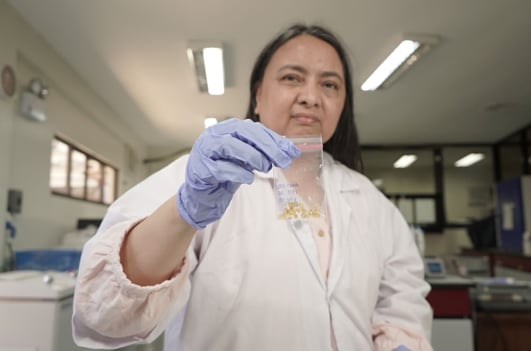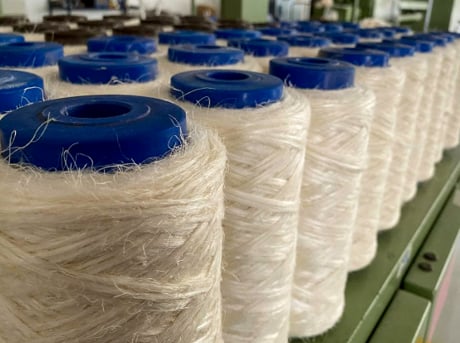- Details
By Matt Jerome Casequin
In a world increasingly being aware of the environmental footprint of industrial processes and products, the quest for sustainable solutions has become paramount. Fortunately, we have come to see a groundbreaking invention – the Carboxymethyl Hyaluronic Acid (CMHA) Hydrogels, a true game-changer in diverse sectors ranging from healthcare to textiles. This invention was created in the busy laboratories of the Philippine Nuclear Research Institute of the Department of Science and Technology (DOST-PNRI).

The Invention
CMHA Hydrogels are derived from hyaluronic acid, a compound renowned for its multifaceted biological functions, including promoting cell migration and proliferation. In general, hydrogels are materials that can hold large amounts of water in their 3-dimensional structure. This ability to retain water makes hydrogels unique and useful for various applications. What sets CMHA apart is its production process, which eschews toxic agents in favor of a green approach utilizing only water and radiation. This not only ensures a high-purity product but also underscores its eco-friendly credentials. For instance, it can provide a moist environment around the wound and support the healing process.
CMHA hydrogels were created using green technology which means that they are prepared without chemical additives and at ambient temperature. They are derived from hyaluronic acid which has diverse biological functions and the addition of the carboxymethyl group imparts additional functionalities. Without toxic crosslinking agents, our hydrogels exhibit exceptional biocompatibility.
- Details
By Matt Jerome Casequin
In the buzzing laboratories of the Department of Science and Technology - Philippine Textile Research Institute (DOST-PTRI), a group of visionary minds led by Mr. Ronald Pechera, Mr. Karl Marx Lennin Florante, Mr. Emmanuel Victor Buniao, Mr. Noriel Sorsone, Mr. Jenneli Caya, and Dr. Julius Leaño, Jr. has embarked on a journey to reshape the textile industry. Their Invention? The Lyocell with Natural Fiber-Blended Yarns, a sustainable substitute aims to transform the way we think about textiles.

Photo Courtesy: DOST-Philippine Textile Research Institute
The European Parliament has published an article on the environmental impact of textile production and waste. According to the article, it takes a significant amount of water and land to grow cotton and other fibers used in textile production. An estimated 2,700 liters of fresh water are required to produce a single cotton t-shirt, which is equivalent to the amount of drinking water one person would need for 2.5 years.









